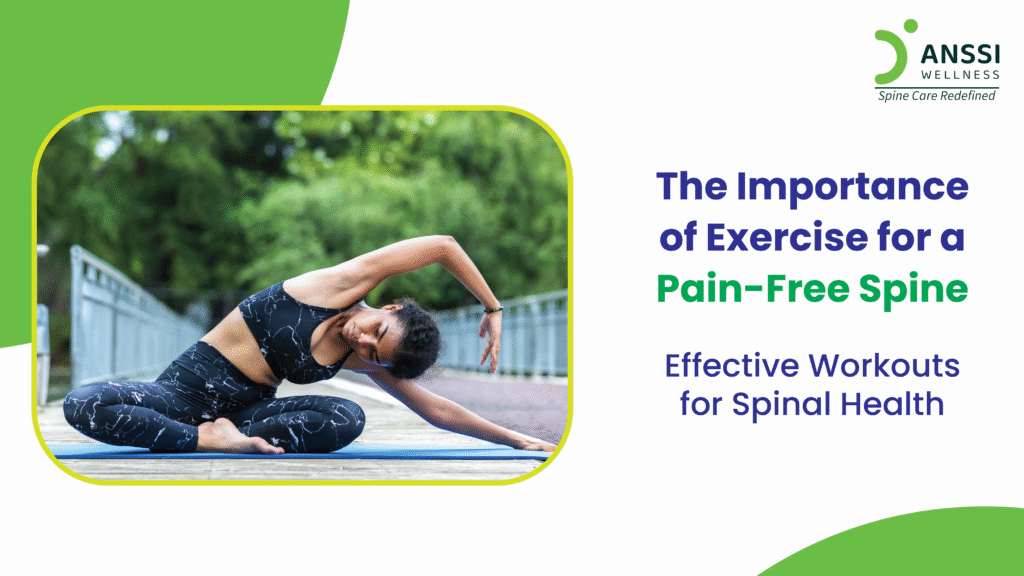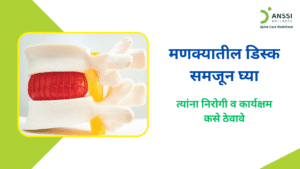A healthy spine is the backbone, quite literally, of a pain-free, active life. Whether you’re sitting at a desk, lifting groceries, or going for a jog, your spine supports nearly every move you make. Unfortunately, sedentary lifestyles, poor posture, and lack of activity can weaken the spine, leading to stiffness, discomfort, and chronic pain.
The good news? Regular, targeted exercise can play a key role in keeping your spine strong, flexible, and pain-free.
Why a Strong Spine Matters
The spine isn’t just a column of bones; it’s a complex structure made up of vertebrae, discs, ligaments, muscles, and nerves that all work together to support your body and facilitate movement.
- When your spinal muscles are weak or unbalanced, the strain shifts to the bones and discs, increasing the risk of injury, degeneration, or herniation.
- On the other hand, a strong, flexible spine can absorb stress better, maintain proper posture, and keep you agile and comfortable throughout daily activities.
Ignoring spinal health can lead to common conditions like lower back pain, stiffness, or even sciatica, issues that affect millions of people worldwide.
The Benefits of Regular Exercise for the Spine
Incorporating spine-friendly exercises into your routine is not just helpful, it’s also essential.
1. Improves Circulation and Disc Nutrition
Spinal discs don’t have a direct blood supply. They rely on movement to absorb nutrients and flush out waste. Gentle motion from stretching or walking helps pump nutrients into the discs, keeping them healthy and hydrated.
2. Enhances Core Strength and Stability
Your core, which is made up of abdominal, back, and pelvic muscles, plays a major role in supporting the spine. Strengthening your core helps distribute weight more evenly and relieves pressure from spinal structures.
3. Prevents Muscle Imbalances and Injury
When some muscles are overused and others are underused, imbalances occur, which can pull your spine out of alignment. Exercise helps correct these imbalances by engaging both sides of the body equally.
4. Reduces Stiffness and Pain
Regular stretching and mobility exercises improve flexibility and range of motion, reducing stiffness that can contribute to pain and discomfort.
Effective Exercises for Spinal Health
Here are a few low-impact workouts that promote spinal strength and flexibility. These exercises are simple, safe, and suitable for most individuals:
Stretching for Flexibility
Cat-Cow Stretch:
Gently moves the spine through flexion and extension, relieving tension.
- How to Perform:
- Start on your hands and knees.
- Arch your back upward (cat) and then dip it downward while lifting your head (cow).
This movement helps improve spinal flexibility and reduces stiffness.
Child’s Pose:
Stretches the lower back and hips, promoting spinal elongation.
How to Perform:
- Kneel and sit back on your heels.
- Extend your arms forward on the floor.
- Take deep breaths and stay in that position for 20-30 seconds.
Spinal Twists (seated or lying down):
Improve mobility in the thoracic spine and release built-up tension.
How to Perform:
- Sit or lie down with a straight spine and gently rotate your upper body to each side.
- Keep the motion smooth and pain-free.
Core Strengthening for Support
Bridges:
Strengthen the glutes and lower back while stabilising the spine.
How to Perform:
- Lie on your back with your knees bent and your feet flat on the floor.
- Lift your hips upward to create a bridge shape, holding the position briefly before lowering.
It eases pain and strengthens the lower back.
Planks:
Engage the entire core and promote proper spinal alignment.
How to Perform:
- Start with a forearm or straight-arm plank position.
- Hold for 20-60 seconds, keeping your body in a straight line.
Dead Bugs or Bird-Dog:
Build coordination and balance while protecting the lower back.
How to Perform:
- Assume a tabletop position.
- Extend one arm and the opposing leg at the same time.
- Hold for 5 seconds, then switch sides.
- Perform 10 repetitions.
Posture-Focused Movements
Wall Angels:
Open up the chest and strengthen upper back muscles, combating slouched posture.
How to Perform:
- Stand with your back against a wall and keep your lower back, shoulders, and head in contact with the wall.
- Raise your arms to form a goalpost position with elbows bent at 90 degrees.
- Raise and lower your arms slowly, while still touching the wall.
- Perform 10 times.
Shoulder Blade Squeezes:
Reinforce upright posture by activating the scapular stabilisers.
How to Perform:
- With your arms at your sides, take a seat or stand.
- Gently pull your shoulder blades together as if you are trying to pinch them.
- Hold for 5 seconds, then do it 10 more times.
These exercises can be performed at home with no equipment and in just a few minutes a day. Always focus on slow, controlled movements and good form over repetition.
Exercise Tips for Spinal Safety
1. Warm-Up First:
A proper warm-up (like 5 minutes of walking or gentle arm circles) increases blood flow and prepares your muscles for movement, reducing the risk of injury.
2. Focus on Form, Not Intensity:
Especially for beginners, it’s important to move mindfully. Poor form can place undue stress on the spine. Use a mirror or work with a physiotherapist to ensure the correct technique.
3. Avoid High-Impact or Twisting Movements:
Jumping, sudden jerks, or twisting under load can strain spinal joints and muscles. Stick to controlled, low-impact movements unless supervised by a professional.
4. Progress Gradually:
Spinal strength builds over time. Avoid overexertion and listen to your body. If you feel sharp pain or discomfort, stop immediately.
5. Consult a Professional When Needed:
If you have a history of spinal problems or are currently experiencing back pain, always consult a spine specialist before beginning an exercise program. Not all exercises are safe for everyone.
About ANSSI:
ANSSI Wellness focuses on improving the quality of life for patients suffering from spinal issues, aiming to provide relief where other conventional treatments have failed. Through advanced non-surgical spinal decompression treatment, ANSSI is committed to helping patients avoid surgery and recover in a safe, effective, and compassionate environment.
Connect with ANSSI Wellness on LinkedIn, Instagram, and Facebook for expert guidance.




